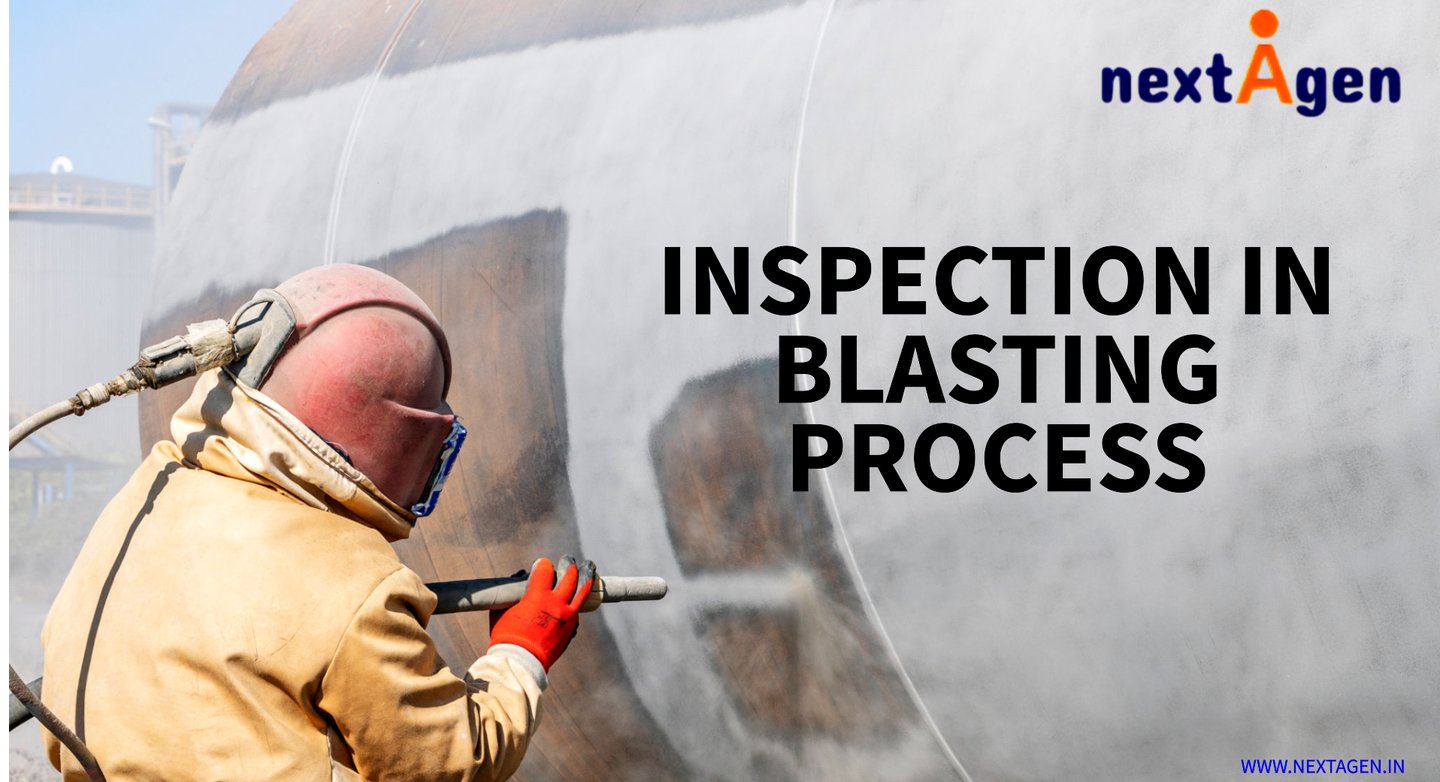Inspection During the Blasting Process
Nextagen Analytics
1/16/20252 min read


Surface preparation plays a vital role in ensuring the success of coating applications. By monitoring specific parameters, following standardized methods, and utilizing the appropriate tools, professionals can ensure optimal surface conditions. Below are detailed procedures for key tests, along with how Nextagen Analytics can guide the selection of the right products for specific applications.
1. Pressure Testing
Method & Procedure:
Equipment Needed: Needle pressure gauge or digital pressure monitor.
Procedure:
Insert the needle pressure gauge into the blast hose, as close to the nozzle as possible.
Operate the blasting equipment at the desired settings.
Record the pressure reading displayed on the gauge to ensure it matches the required specifications.
Standards:
ISO 8502-2
SSPC-SP10/NACE No. 2
Tools: Pressure gauges from Parker Hannifin, Testo, and Sullair.
2. Nozzle Size Measurement
Method & Procedure:
Equipment Needed: Nozzle orifice gauge or digital wear monitor.
Procedure:
Remove the nozzle from the blasting equipment.
Insert the nozzle orifice gauge into the nozzle opening.
Record the diameter measurement and compare it to the original nozzle size. Replace if wear exceeds acceptable limits.
Standards:
ISO 11126-10
ASTM D4285
Tools: Nozzle gauges from Clemco and BlastOne.
3. Climatic Condition Monitoring
Method & Procedure:
Equipment Needed: Hygrometer, dew point meter, or climatic condition monitor.
Procedure:
Measure air temperature, surface temperature, relative humidity, and dew point using the device.
Ensure the surface temperature is at least 3°C (5°F) above the dew point.
Check climatic conditions periodically during blasting.
Standards:
ISO 8502-4
ASTM D3276
Tools: Kestrel 5000, Extech hygrometers.
4. Cleanliness of Water and Blast Media
Method & Procedure:
Equipment Needed: Conductivity meter, clean water, and filter.
Procedure:
Soak a sample of abrasive media in clean water and agitate for 1 minute.
Filter the solution and measure the conductivity using the meter.
Compare the results to the acceptable contamination limits provided by the coating's technical data sheet.
Standards:
ISO 11127-6
ASTM D4940
Tools: Conductivity meters from Hanna Instruments and Horiba.
5. Chloride Testing in Abrasives
Method & Procedure:
Equipment Needed: Chloride-specific test kit (e.g., titration tube).
Procedure:
Measure a fixed amount of abrasive into a container.
Add a pre-measured amount of test solution to the container and mix.
Insert the prepared titration tube into the solution.
Observe the color change in the crystals inside the tube.
Read the chloride concentration (ppm) from the scale on the tube where the color changes from pink to white.
Standards:
ISO 8502-6
ASTM D512
Tools: Test kits from Hach and LaMotte.
6. Chloride Testing in Water
Method & Procedure:
Equipment Needed: Chloride-specific water test kit.
Procedure:
Collect a sample of water using the dropper provided in the kit.
Place the water in the test bottle and mix with the provided solution.
Insert a prepared titration tube into the solution and wait for capillary action to move the liquid.
Note the point where the color changes from pink to white and read the chloride concentration (ppm) on the scale.
Standards:
ISO 8502-9
ASTM D1293
Tools: Chloride test kits from Hanna Instruments, Merck Millipore.
7. Soluble Salt Testing
Method & Procedure:
Equipment Needed: Soluble salt test kit or conductivity meter.
Procedure:
Place a known mass or volume of abrasive in a container.
Add clean water and agitate for a specified duration (e.g., 1 minute).
Filter the solution and measure conductivity with the meter.
Compare results to ISO or ASTM standards for acceptable salt levels.
Standards:
ISO 8502-5
ASTM D4940
Tools: Soluble salt test kits from ChlorRid and Testex.


Innovation House
Mon-Sat 9am-7pm

contact@nextagen.in

+91 2654059388
© 2024 Nextagen Analytics Private Limited . All Rights Reserved.